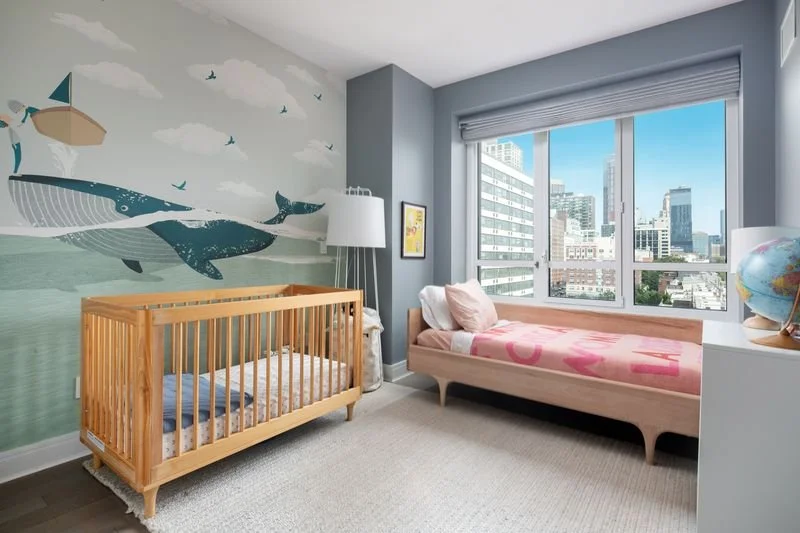Getting Greener: Eight Home Upgrades for a Sustainable Lifestyle
In recent years, more people are adopting sustainable lifestyles, driven by the need to reduce their environmental footprint, lower energy costs, and create healthier living environments. In regions like Memphis, where summers are hot and muggy and winters can be cold and rainy, managing energy costs is crucial. One of the smartest decisions homeowners can make in such extreme climates is opting for sustainable home upgrades. Small changes in your home can have a substantial impact, influencing daily activities and leading to long-term benefits.
This article explores eight effective home upgrades that can help you transition to a more sustainable lifestyle.
1. Insulate and Seal Your Home Efficiently
Proper insulation is fundamental for a more sustainable home since it reduces energy consumption and improves comfort. In climates with extreme temperatures, effective insulation helps maintain a consistent indoor temperature. This reduces the need for excessive heating or cooling, leading to lower energy bills.
There are various eco-friendly insulation materials to choose from, such as cellulose, recycled denim, and sheep’s wool. Sealing gaps around windows and doors is also essential to prevent energy loss. Weatherstripping and caulking are simple yet effective methods to ensure your home remains energy-efficient.
2. Eco-Friendly Bathroom Remodeling
Making your bathroom more eco-friendly is another effective way to embrace sustainability at home, especially in a hot and muggy climate like Memphis. One of the simplest ways to achieve this is by installing water-saving fixtures, such as low-flow toilets, faucets, and showerheads. These fixtures reduce water usage without compromising performance, helping to conserve water, a valuable resource.
Sustainable materials, like bamboo, reclaimed wood, and recycled glass tiles, can also be used in bathroom remodeling. These materials are not only durable and stylish but also environmentally friendly. Engaging experts for bathroom remodeling in Memphis can ensure that these eco-friendly options are correctly installed and function efficiently. They can help you choose materials and fixtures that suit your climate and aesthetic preferences while also maximizing sustainability. With professional guidance, your bathroom can become a model of eco-friendly design, reducing your environmental footprint while enhancing comfort.
3. Install Energy-Efficient Windows
Energy-efficient windows are a game-changer for maintaining a comfortable home environment while minimizing energy use. These windows are designed to reduce the amount of heat that enters during summer and escapes during winter, making them ideal for areas with fluctuating climates. In Memphis, where weather conditions vary significantly, energy-efficient windows can help regulate indoor temperatures and reduce reliance on heating and cooling systems.
Double-glazed windows, which have two panes of glass with an insulating layer of air or gas in between, provide better insulation than single-pane windows. They reduce heat transfer and improve energy efficiency. This upgrade lowers energy costs and enhances the overall comfort and sustainability of your home.
4. Upgrade to a Smart Thermostat
A smart thermostat is an innovative tool that optimizes your home’s heating and cooling systems, making them more efficient. Unlike traditional thermostats, smart thermostats can learn your schedule and adjust the temperature accordingly, ensuring that energy is not wasted when no one is home. This feature is particularly useful in extreme climates, where temperature control is crucial for maintaining a comfortable living environment.
Many smart thermostats offer remote control features, allowing you to adjust settings from your smartphone, regardless of your location. This flexibility helps you manage your energy use more effectively, reducing both your carbon footprint and energy bills. Over time, the cost savings and environmental benefits of a smart thermostat make it a valuable addition to any sustainable home.
5. Use Sustainable Flooring Materials
Choosing sustainable flooring is an excellent way to make your home more eco-friendly while adding a stylish touch. Traditional flooring materials like vinyl or carpet can have a high environmental impact, often being made from non-renewable resources and emitting harmful chemicals. Instead, opt for sustainable flooring options that are made from renewable resources and have a lower environmental footprint.
Bamboo, for instance, is a rapidly renewable resource that grows much faster than traditional hardwood trees. It's durable, aesthetically pleasing, and suitable for various climates, including areas with high humidity. Cork is another sustainable option that offers natural insulation and is resistant to mold and mildew, making it ideal for humid environments. Reclaimed wood, sourced from old structures, reduces the demand for new timber and brings a unique, rustic charm to your home. By opting for sustainable flooring, you not only reduce your environmental impact but also enhance the aesthetic appeal and durability of your home’s interior.
6. Install Solar Panels
Harnessing solar energy is one of the most impactful ways to reduce your home's reliance on non-renewable energy sources. Solar panels convert sunlight into electricity, providing a renewable energy source that can reduce or even eliminate your electricity bills. In sunny regions like Memphis, where solar exposure is abundant, installing solar panels can be particularly effective.
The process of installing solar panels involves several steps, including assessing your home’s solar potential, choosing the right type of panels, and determining the appropriate installation method. It's crucial to consider factors like roof orientation, shading, and local regulations. Hiring a professional installer ensures the panels are set up correctly for maximum efficiency. Additionally, many states offer financial incentives, tax credits, and rebates for solar installations, making this upgrade more affordable and attractive.
7. Collect and Utilize Rainwater
Rainwater harvesting is a practical and sustainable way to reduce your household’s water consumption. By collecting and storing rainwater, you can use it for various non-potable purposes, such as watering plants, flushing toilets, and washing cars. This reduces the demand on municipal water supplies and helps lower your water bills, particularly in regions with variable weather patterns.
There are several systems available for rainwater harvesting, ranging from simple rain barrels to more complex systems with multiple tanks and filtration components. It’s essential to choose a system that suits your needs and the local climate.
8. Adopt a Green Roof or Vertical Garden
Green roofs and vertical gardens are innovative ways to make your home more sustainable and improve its aesthetic appeal. A green roof covered with vegetation provides natural insulation, reduces heat absorption, and enhances air quality by absorbing pollutants.
Vertical gardens, also known as living walls, bring greenery to small spaces by growing plants vertically on a structure. They are particularly beneficial in urban environments where horizontal space is limited. Vertical gardens improve air quality, reduce indoor temperatures, and create a visually pleasing environment. Both green roofs and vertical gardens can help manage stormwater runoff, provide insulation, and enhance biodiversity.
Small Steps Have Big Impacts
Embracing sustainable home upgrades is more than just a trend; it's a commitment to a healthier, more responsible way of living. These upgrades encourage a lifestyle that prioritizes efficiency, resourcefulness, and a long-term vision for a better future. Every step you take towards sustainability at home contributes to a collective effort to protect our planet, proving that individual actions, no matter how small, can lead to meaningful change.






